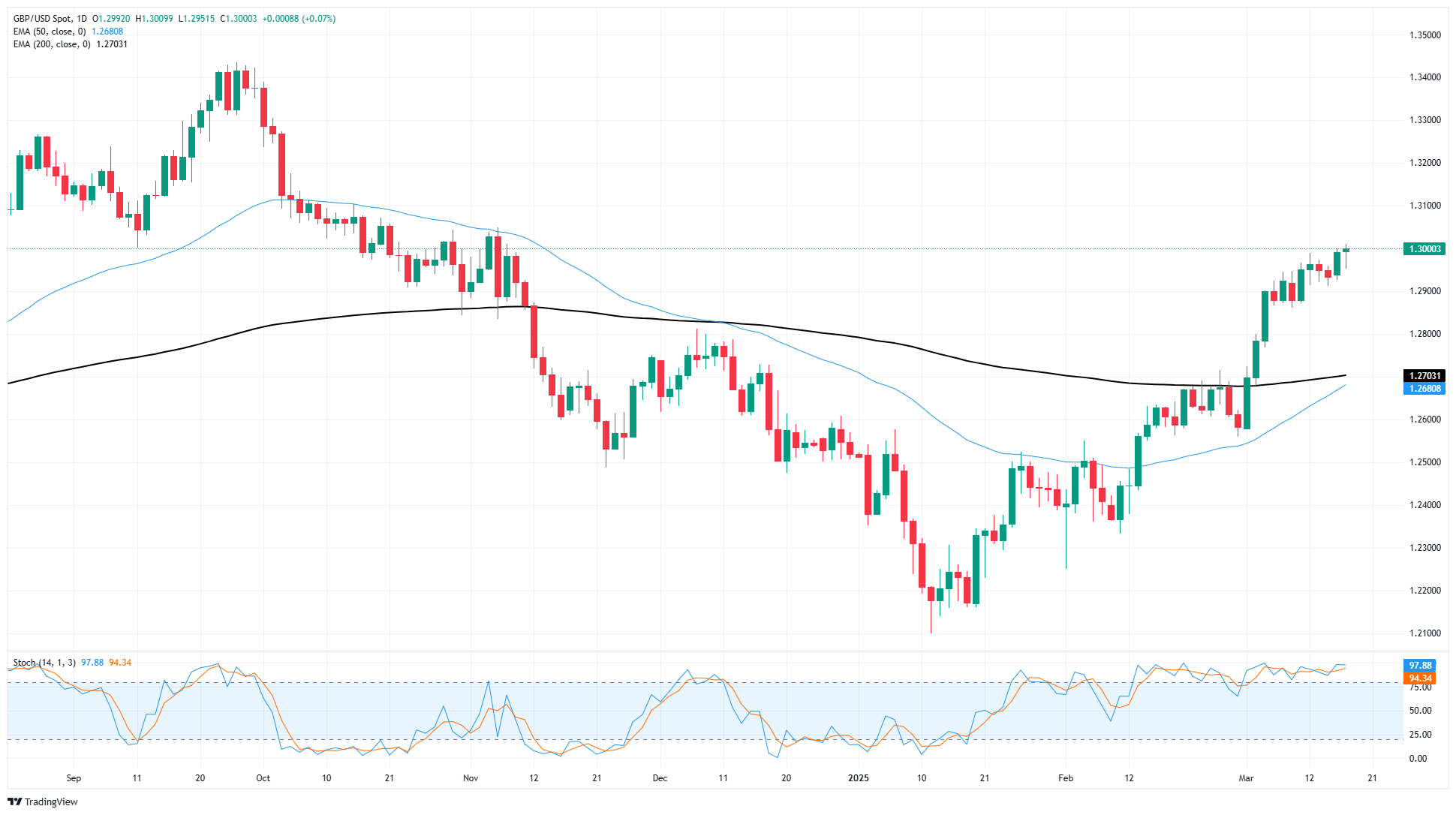GBP/USD tests higher ground ahead of back-to-back central bank rate calls
- GBP/USD pushed back into the 1.3000 handle on Tuesday.
- Markets are buckling up for a one-two punch of Fed and BoE rate calls.
- The Fed is expected to hold steady on rates until April, BoE also seen steady.
GBP/USD traded thinly on Tuesday, but still inched back into the 1.3000 handle, chalking in a fresh 19-week high ahead of high-impact rate calls from both the Federal Reserve (Fed) and the Bank of England (BoE). The Fed is widely expected to hold steady on rates this week, but a fresh update to the Federal Open Market Committee’s (FOMC) interest rate expectations will draw plenty of eyes.
The Federal Reserve’s (Fed) latest rate call is due on Wednesday. According to the CME’s FedWatch Tool, rate markets broadly anticipate the Fed to stand pat on rates for the next two meetings, with the next quarter-point rate trim expected at the Federal Open Market Committee’s (FOMC) June meeting. However, the FOMC’s latest interest rate forecasts will be released this week. They could send rate cut expectations through the wringer if Fed policymaker’s expectations for interest rates deviate wildly from current market forecasts.
The BoE’s upcoming rate call on Thursday will draw some Cable traders’ attention, but not nearly as much as the Fed’s showing during the midweek market session. After the BoE’s latest rate cut last month, the UK’s central bank is expected to vote 7-to-2 to keep rates unchanged at 4.5%, with two particularly dovish policymakers expected to vote for another quarter-point cut.
GBP/USD price forecast
GBP/USD is testing into its third straight week of gains, clipping back into the 1.3000 handle for the first time since last November. The pair is now trading 7.5% above January’s multi-month low of 1.2100. Near-term price action is still tilted firmly in favor of Cable bulls, however GBP/USD may have overextended itself as technical oscillators remain pinned deep in overbought territory.
GBP/USD daily chart
Pound Sterling FAQs
The Pound Sterling (GBP) is the oldest currency in the world (886 AD) and the official currency of the United Kingdom. It is the fourth most traded unit for foreign exchange (FX) in the world, accounting for 12% of all transactions, averaging $630 billion a day, according to 2022 data. Its key trading pairs are GBP/USD, also known as ‘Cable’, which accounts for 11% of FX, GBP/JPY, or the ‘Dragon’ as it is known by traders (3%), and EUR/GBP (2%). The Pound Sterling is issued by the Bank of England (BoE).
The single most important factor influencing the value of the Pound Sterling is monetary policy decided by the Bank of England. The BoE bases its decisions on whether it has achieved its primary goal of “price stability” – a steady inflation rate of around 2%. Its primary tool for achieving this is the adjustment of interest rates. When inflation is too high, the BoE will try to rein it in by raising interest rates, making it more expensive for people and businesses to access credit. This is generally positive for GBP, as higher interest rates make the UK a more attractive place for global investors to park their money. When inflation falls too low it is a sign economic growth is slowing. In this scenario, the BoE will consider lowering interest rates to cheapen credit so businesses will borrow more to invest in growth-generating projects.
Data releases gauge the health of the economy and can impact the value of the Pound Sterling. Indicators such as GDP, Manufacturing and Services PMIs, and employment can all influence the direction of the GBP. A strong economy is good for Sterling. Not only does it attract more foreign investment but it may encourage the BoE to put up interest rates, which will directly strengthen GBP. Otherwise, if economic data is weak, the Pound Sterling is likely to fall.
Another significant data release for the Pound Sterling is the Trade Balance. This indicator measures the difference between what a country earns from its exports and what it spends on imports over a given period. If a country produces highly sought-after exports, its currency will benefit purely from the extra demand created from foreign buyers seeking to purchase these goods. Therefore, a positive net Trade Balance strengthens a currency and vice versa for a negative balance.

